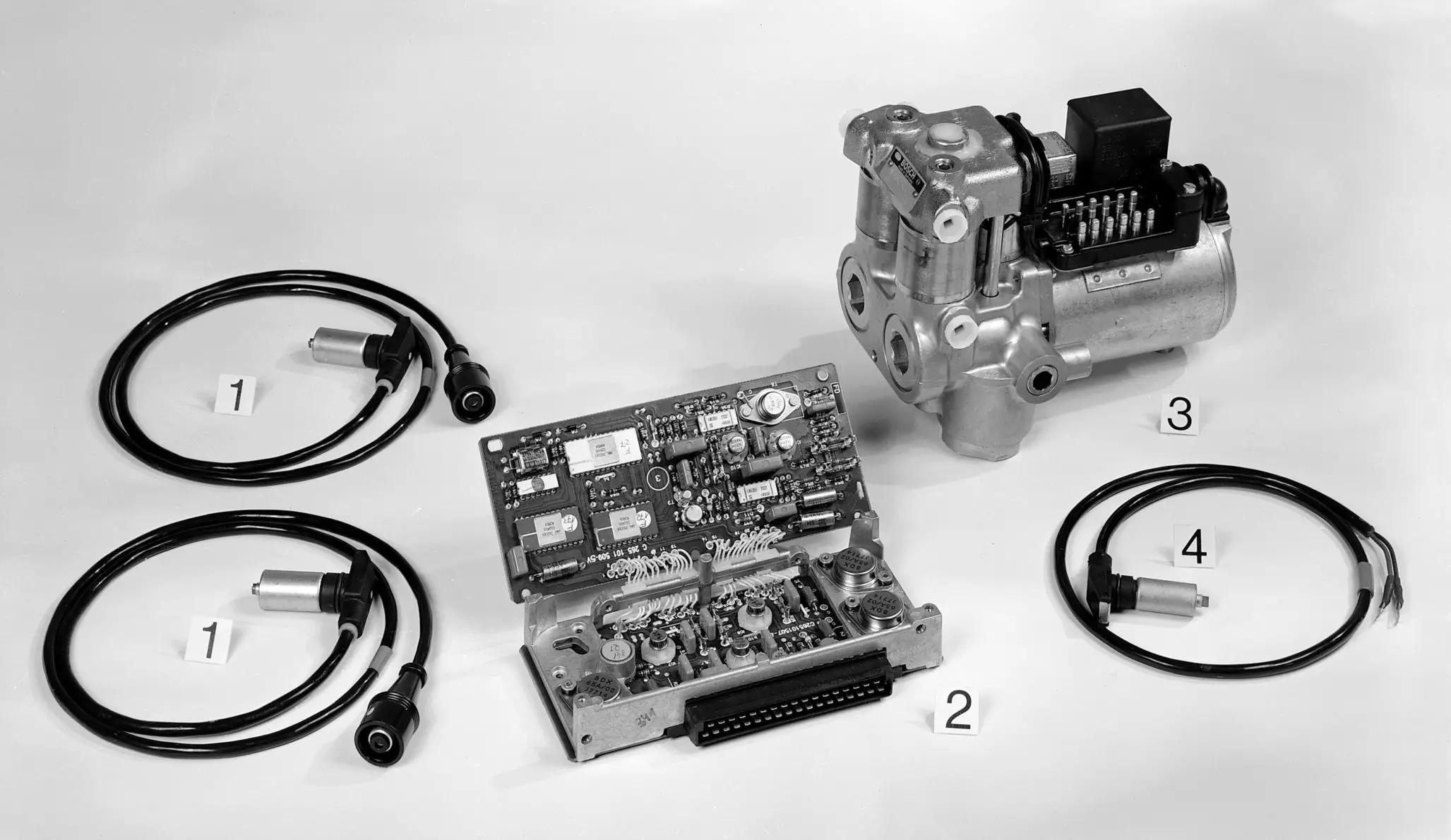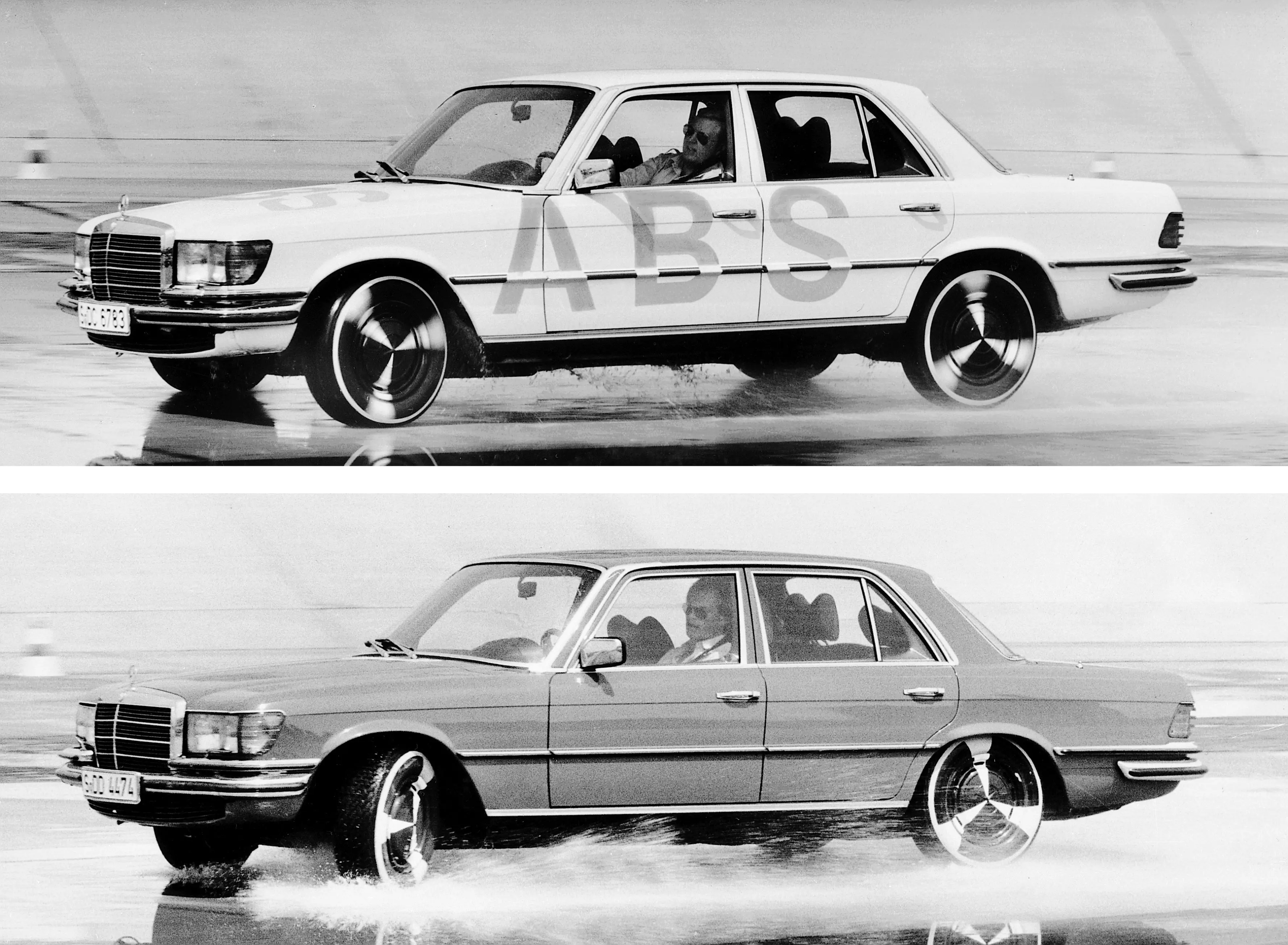It was 40 years ago that the Mercedes-Benz S-Class (W116) became the first production car to be equipped with the electronic anti-lock braking system (from the original German Antiblockier-Bremssystem), better known by the acronym ABS.
Available only as an option, from the end of 1978, for the not-so-modest sum of DM 2217.60 (almost 1134 euros), it would quickly expand across the range of the German brand — in 1980 as an option on all its models, in 1981 it reached commercials and from 1992 it was part of the standard equipment of all Mercedes-Benz cars.
But what is ABS?
As the name implies, this system prevents the wheels from locking when braking — especially on low-grip surfaces — allowing you to apply maximum braking force, while maintaining the vehicle's directional control.

We can see the various components of the system in the image above, not differing much from today: control unit (computer), four speed sensors — one per wheel — hydraulic valves (which control the brake pressure), and a pump (restore brake pressure). But how does it all work? We give the floor to Mercedes-Benz itself, taken from one of its brochures at the time:
The anti-lock braking system uses a computer to detect changes in the rotation speed of each wheel during braking. If the speed decreases too quickly (such as when braking on a slippery surface) and there is a risk of the wheel locking, the computer automatically reduces the pressure on the brake. The wheel accelerates again and the brake pressure is increased again, thus braking the wheel. This process is repeated several times in a matter of seconds.
40 years ago…
It was between the 22nd and 25th of August 1978 that Mercedes-Benz and Bosch presented the ABS in Untertürkheim, Stuttgart, Germany. But it would not be the first time that he demonstrated the use of such a system.
The history of ABS development at Mercedes-Benz stretches back in time, with the first known patent application for the system in 1953, through Hans Scherenberg, then design director at Mercedes-Benz and later its development director.

Similar systems were already known, whether in airplanes (anti-skid) or in trains (anti-slip), but in a car it was an extremely complex task, with much greater demands on sensors, data processing and control. The intensive development between the Research and Development department itself and various industrial partners would ultimately be successful, with the turning point occurring in 1963, when work began, in concrete terms, on an electronic-hydraulic control system.
In 1966, Daimler-Benz began a collaboration with electronics specialist Teldix (later acquired by Bosch), culminating in a first demonstration of the “Mercedes-Benz/Teldix Anti-Block System” to the media in 1970 , led by Hans Scherenberg. This system used analog circuitry, but for mass production of the system, the development team looked to digital circuitry as the way forward — a more reliable, simpler and more powerful solution.

Jürgen Paul, engineer and responsible for the ABS project at Mercedes-Benz, would later claim that the decision to go digital was the key moment for the development of ABS. Together with Bosch — responsible for the digital control unit — Mercedes-Benz would unveil the second generation of ABS on the test track of its factory in Untertürkheim.
ABS was just the beginning
Not only would ABS eventually become one of the most common active safety equipment in the car, it also marked the beginning of the development of digital assistance systems in the German brand's cars, and beyond.
The development of sensors for ABS, among other components, would also be used, in the German brand, for the ASR or anti-skid control system (1985); the ESP or stability control (1995); the BAS or Brake Assist System (1996); and adaptive cruise control (1998), with the addition of other sensors and components.
